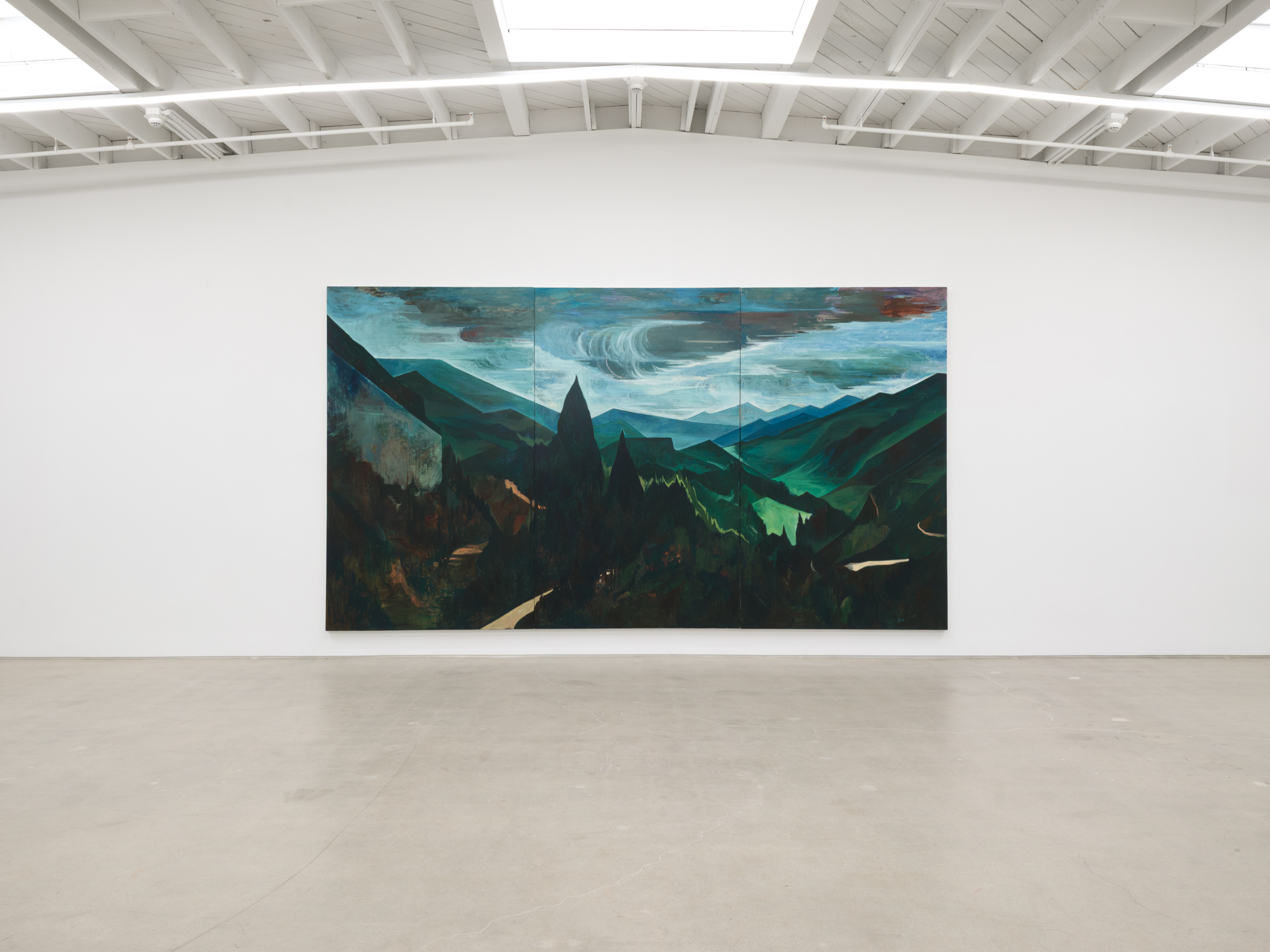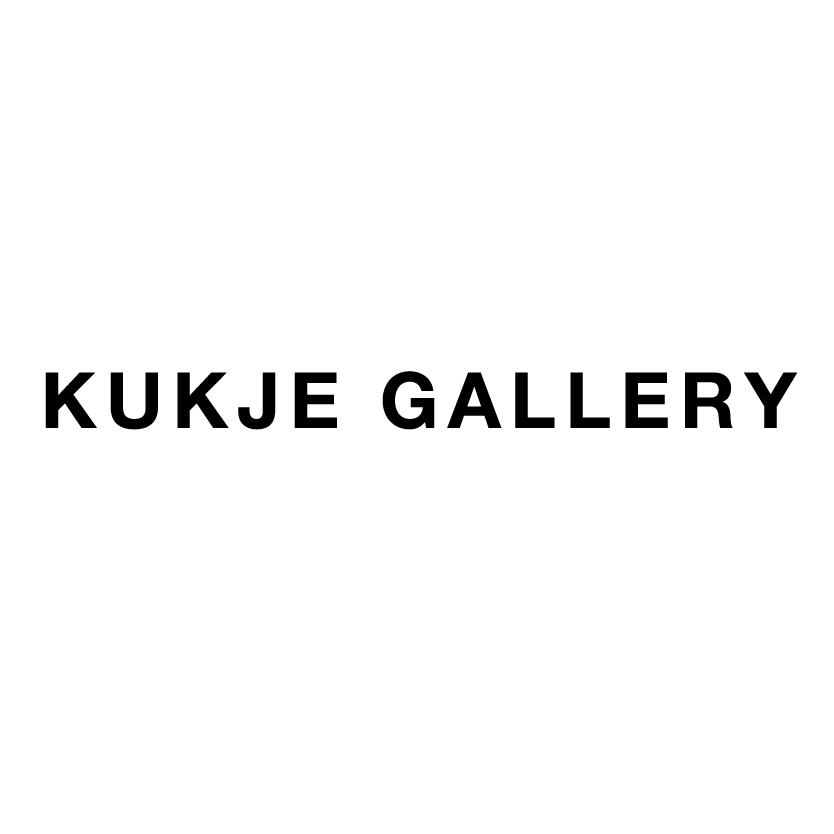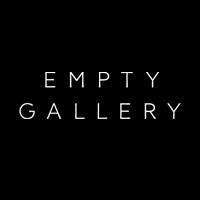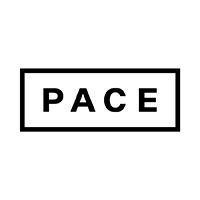Xiao Jiang’s “By the Window”
By JENNIFER S. LI

Installation view of XIAO JIANG’s "By the Window" at Karma Gallery, Los Angeles, 2025. Courtesy Karma Gallery.
Xiao Jiang
By the Window
Karma Gallery
Los Angeles
Apr 11–May 23, 2025
Like the crisscrossing warp and weft of the burlap that bears Xiao Jiang’s tranquil scenes, his works interweave classical Chinese landscape painting with Western traditions—particularly art historical movements tied to the Industrial Revolution and societal changes. “By the Window,” Xiao’s solo show at Karma Gallery in Los Angeles, presented 19 new oil paintings that evoked a pastoral nostalgia—a longing for the boundless serenity of nature, untouched by rampant industrialization.
The exhibition opened with Mountain after Mountain (2024), a mural-sized triptych showcasing the dramatic mountains of Jinggangshan in southeastern China, where Xiao was born. The jagged peaks and lush valleys unfold across the three panels, which resemble the configuration of a Chinese scroll or screen painting. The work also called to mind the sublime landscapes in German Romantic paintings, like Caspar David Friedrich’s Wanderer Above the Sea of Fog (1817)—though the latter’s iconic Rückenfigur (“figure from the back”) is absent from Xiao’s canvas. However, viewers who stood in front of this monumental painting, their backs turned to those behind them, seemed to embody Friedrich’s lone wayfarer, reifying the otherwise missing Rückenfigur.

XIAO JIANG, Return, 2025, oil on burlap, 150 × 200 cm. Courtesy Karma Gallery, Los Angeles.
Though omitted from Mountain after Mountain, the Rückenfigur motif appears elsewhere in Xiao’s medium-sized and smaller works, which were dispersed across the lofty, two-room gallery. Depicting the suburbs of Shanghai—where the artist has lived since 2006—nary a skyscraper is to be seen as parks abound. In Departure (2024), a backpacker on the edge of a cliff looks out upon sprawling mountains, as well as the lucent, orange clouds above him. Not unlike the French Realist Jean-François Millet’s reverent portrayals of farmers against luminous landscapes and radiant sunsets, a hiker with a walking stick in Return (2025) basks in the early evening glow that has blanketed the nearby fields as well as the buildings in the distance.

XIAO JIANG, Silhouette by the Flowers, 2024, oil on burlap, 100 × 80 cm. Courtesy Karma Gallery, Los Angeles.
Quieter, domestic imagery is shown in A Breakfast and Silhouette by the Flowers (both 2024), which feature Xiao’s wife, her face concealed by shadow and turned away from the viewer. These works recall the melancholy and isolation of Edward Hopper’s affective scenes—indeed, the exhibition’s title is perhaps an homage to the ubiquitous windows in Hopper’s paintings, which also symbolize the boundary between inner and outer worlds, and the act of seeing versus being seen. In a similar vein, Xiao conveys this sensorial duality in his depictions of mundane yet tender moments at the breakfast table, or a simple rendering of flowers in a clear glass vase. In Beyond the Window (2024), Xiao’s wife appears in shadow, leaning against a table next to the sofa—an arrangement that reflects Hopper’s tendency to barricade the viewer from the painted scene through windows, furniture, and architectural elements.

XIAO JIANG, Two Friends, 2024, oil on burlap, 150 × 200 cm. Courtesy Karma Gallery, Los Angeles.
The window-and-Rückenfigur trope persisted in Two Friends (2024), a masterful study in the pictorial elements of a painting, further demonstrating Xiao’s compositional prowess. Here, two young men stand in a tenebrous room, one peering at the daytime brightness outside while the other remains enveloped in semi-darkness. On the right half of the painting, the brushstrokes are visibly looser and more textured, echoing the gestural works of Abstract Expressionist painters Joan Mitchell and Cy Twombly.
Oftentimes, the narrative is that one leaves behind the countryside for a new life in the city. For Xiao, the reverse is also true, as his works bring the beauty of Jinggangshan to Shanghai, the Chinese megacity that he now calls home. At once tender and vitalizing, Xiao’s paintings of natural landscapes and people encouraged us to not only reconnect with the environment, but also with our inner worlds and each other.
Jennifer S. Li is a writer, art advisor, and educator based in Los Angeles. She is also ArtAsiaPacific’s Los Angeles desk editor.







